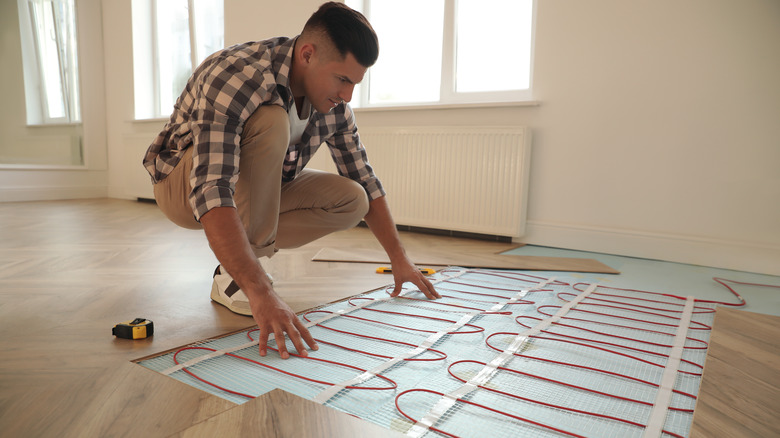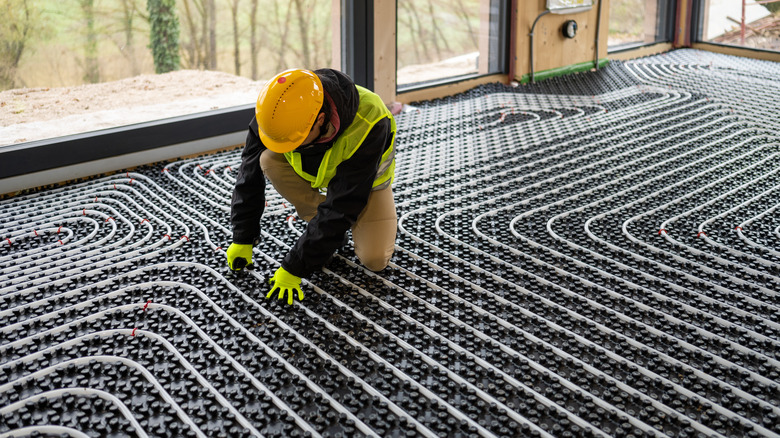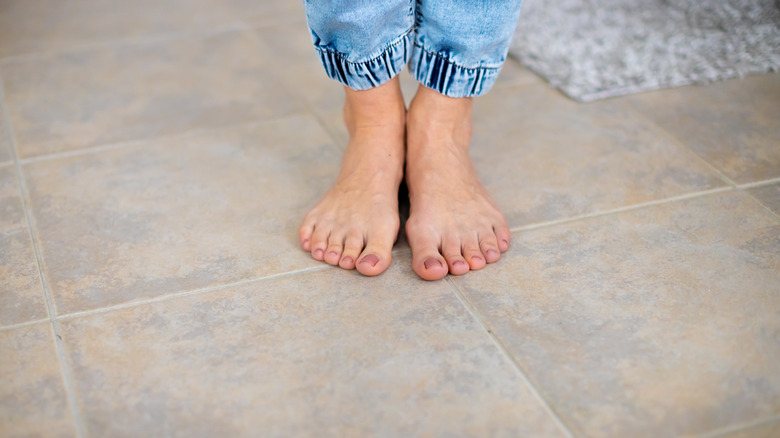The Disadvantages Of Radiant Heat Flooring You'll Want To Know Before Installing
It can be tempting to stay in bed when the alternative is tossing off the covers and stepping onto a frigid floor. Radiant heat flooring is touted as a perfect solution, thanks to an efficient system of electric wires or hot water pipes installed beneath the flooring. It's also popular because it's energy-efficient and can help bring your heating costs down. Moreover, radiant heating sources provide consistent heat across entire rooms and aren't noisy. They can even help alleviate allergies by reducing the amount of air movement in your home. Since radiant heat flooring doesn't rely on a blower to distribute heated air the way a forced air system does, it's less likely to stir pet dander and other allergens around.
But there are many things to know about radiant floor heating before you buy it, and that includes some serious downsides. You should consider the high cost, installation complexity, repair difficulty, and limitations when it comes to flooring type before making the investment. Read on to learn more about the disadvantages of radiant heat flooring.
The upfront installation cost is a major downside
From considering the flooring types that work the best with radiant heating to understanding the overall cost, it's important to research any system you or your flooring provider plan to install. So just how much do heated floors cost? It depends on the system you choose. Radiant heat floors that rely on electric cables to produce heat cost between $7.9 and $15 per square foot, including labor and materials. So, expect to pay between $11,850 and $22,500 for a 1,500 square feet home. In contrast, hydronic systems, which comprise tubing that circulates water heated by a boiler, cost between $6 and $20 per square foot. Accordingly, you'll have to shell out between $9,000 and $30,000 for 1,500 square feet. While it's possible to DIY radiant heat flooring, you'll need to understand how to install electric mats and panels, valves, tubing, and manifolds in addition to the flooring itself. Doing it wrong can cause uneven heating, serious leaks, damaged flooring, and be a safety hazard.
Apart from the initial costs, you'll have to shell out money for repairs if problems arise from leaking pipes in a hydronic system or a damaged heating cable in an electric one. In extreme cases, you might have to rip up your existing floor. However, operating a radiant heat floor system may be less expensive long-term, provided you don't have to repair it. You can even expect to pay significantly less on your home's energy bill each month than you will to run a furnace.
Not every flooring type works well with radiant heat systems
Limited compatibility with various flooring types is another potential disadvantage of radiant heating systems. But it's more than not getting the look you want. The best types of flooring for radiant heat are tile, stone, or engineered hardwoods, because they conduct heat especially well. Although some thinner luxury vinyl flooring may work with radiant heat, check the manufacturer's recommendations to ensure it won't damage your planks or void its warranty.
Neither solid hardwood floors nor carpet are ideal for radiant heat systems. Hardwoods like Brazilian cherry, pine, and hickory can warp from the constant dry heat underneath them. In the event of a leaking hydronic system, they can buckle, peel, or rot. Carpet isn't much better. In addition to being laid over padding that can impede any heat transfer, it's not a good heat conductor. However, if you must install carpet, you'll have to choose a low-pile option. In case you decide to install radiant heating, pick thinner flooring materials since they work better with these systems than thick ones. They're better at conducting heat and result in a lowered floor height, reducing the risk of tripping.


